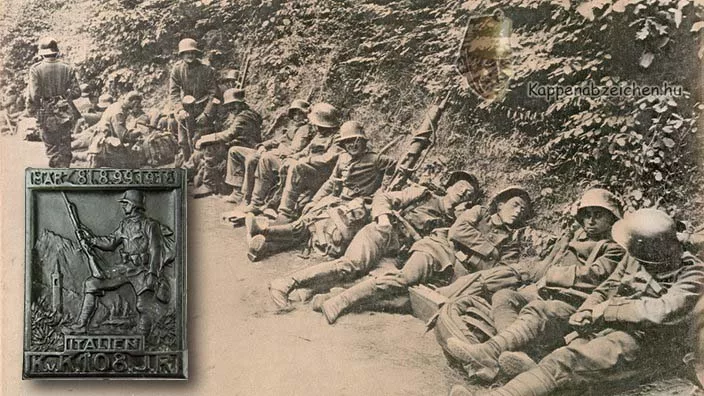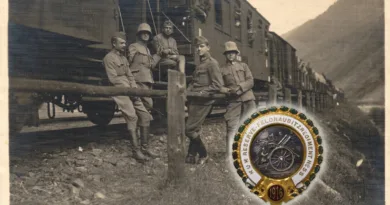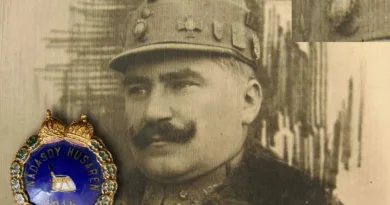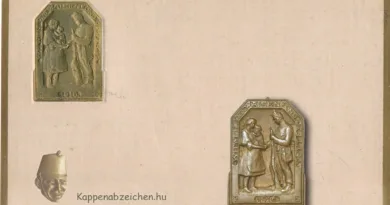IR 108 Mt Grappa
The Monarchy’s army was significantly reorganized at the beginning of 1918. Instead of the previous infantry regiments with four battalions, regiments consisting of three battalions were created. Previously, one battalion received mountain training and was assigned to the mountain brigades. Now these have ceased to exist. New regiments were organized from the previously separated battalions. With the replacements, in many cases, the surplus units from the regiments with more than the required four battalions were also directed to the new regiments. In this way, more than 30 new regiments were formed this year.
The 108th Infantry Regiment eventually received four battalions, because in addition to the two 8th and one 99th battalions originally intended for this unit, the previously separated I/81st Battalion was also added. The upper edge of the badge presented in the post shows the numbers of the three regiments next to the founding date of March 1918.
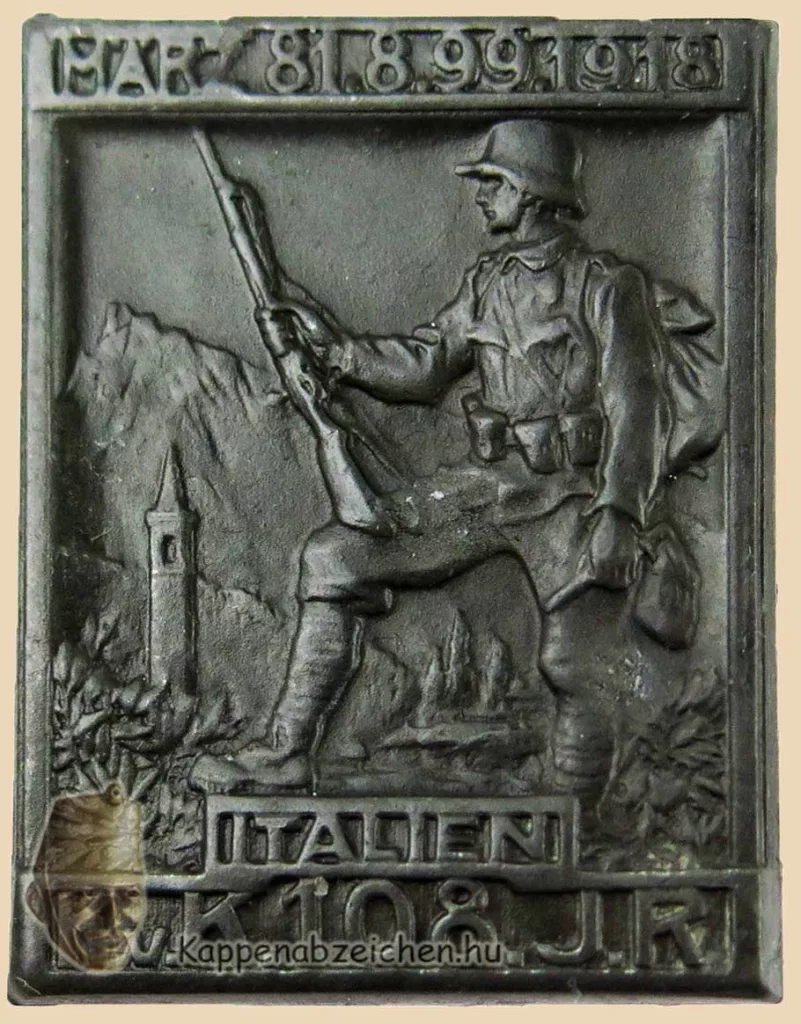
The new regiments were deployed on the Italian front, so their badges bear the images and names of that front. I have previously shown the badge of the 106th Infantry Regiment here, which has the inscription Piave and the image of the Venetian lion. The badge of the 108th depicts a mountainous landscape with the inscription Italien (Italy). The 108th Regiment was assigned to the 60th Division, which was stationed in the mountainous terrain between the Siebengemeinden Plateau and the Piave, on both sides of the Brenta river. During the June 1918 offensive, the division was part of the unit attacking Mt Grappa. The attack failed to break through the Italian third line. Having achieved minimal territorial gains, it essentially stalled on the first day. The division’s regiments were largely destroyed by artillery fire from the mountains.
With this in mind, the question arises as to when the badge was made? I think it was just before the offensive, perhaps with the purpose of improving the morale. The location of the photo attached to the post is unknown. The use of assault helmets suggests a date of 1918, as does the summer clothing. It depicts tired soldiers resting in mountainous terrain. It could have been made on Grappa.

